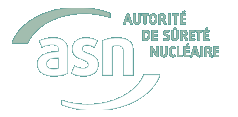| Chapter 05 |
- ANTICIPATING
- Looking ahead and planning
- The emergency plans for basic nuclear installations (BNIs)
- The ORSEC-TMR plan
- Responding to any other radiological emergency situation
- Role of ASN in the preparation and follow-up of emergency plans
- Controlling urban development around nuclear sites
- Organising a collective response
- Local response organisation
- National response organisation
- Protecting the public
- General protective actions
- Iodine tablets
- Care and treatment of contaminated persons
- Understanding the long-term consequences
- RESPONDING TO AN EMERGENCY SITUATION
- Assisting the Government
- ASN’s duties in emergency situations
- Organisation of ASN
- ASN’s emergency response centre
- Ensuring efficient coordination with international authorities
- Bilateral relations
- Multilateral relations
- International assistance
- LEARNING FROM EXPERIENCE
- Carrying out exercises
- Nuclear alert tests and mobilisation exercises
- National nuclear and radiological emergency exercises
- Other emergency exercises
- Assessing with a view to improvement
- OUTLOOK
|
|
The accident that struck the Fukushima Daiichi NPP raised a certain
number of questions concerning the emergency response,
both in Japan and more generally around the world:
- what should be the level of involvement and decision-making
by the public authorities in the management of the emergency?
- are the various bodies involved in the emergency licensees,
public authorities, technical support organisations sufficiently
prepared for such extreme situations?
- are the protection and intervention perimeters around the sites
extensive enough? Are all the populations concerned wellinformed
and prepared? Are the general public protective measures
adequately identified and sufficiently well prepared?
- are the arrangements and the material resources necessary for
checking the contamination of goods and persons appropriate
to large-scale emergencies and available in sufficient numbers?
- what help could be provided by foreign countries or international
organisations in the management of the technical and
media emergency?
- etc.
ASN considers that these questions concern essential aspects of
emergency management, in particular the organisation and training
of the parties involved, the role of the safety regulator and
the expertise, emergency planning, post-accident doctrine, notification
and international assistance processes.
In accordance with the important nuclear emergency roles
entrusted to it by the TSN Act, ASN will make a full contribution
to the ongoing work being done by the public authorities, in
close collaboration with the SGDSN, to integrate the experience
feedback from the Fukushima Daiichi NPP accident.
In 2011, ASN identified some areas for internal improvements to
its response to emergency situations. In 2012, ASN will deploy
these improvements and will continue to work on the processes
involved in the run-up to activating on-call arrangements. The
change in ASN head offices will be an opportunity to modify the
ASN emergency response centre, bringing it into line with the
latest international standards.
ASN will also ensure that the annual programme of nuclear
emergency exercises takes account of the initial lessons learned
from the Fukushima Daiichi NPP accident. ASN considers that it
would be advisable for these exercises to be able to closely
involve the licensee and public authorities at the highest level
and allow testing of the interface between the ORSEC and PPI
plans.
ASN will clarify and reinforce its doctrine with respect to controlling
urban development around the BNIs. ASN will take account
of the observations arising from the public consultation and will
finalise the nuclear risk information and communication support
guide. With the help of the Ministry of the Environment, this
guide will be transmitted to the Prefectures in order to provide a
uniform overall framework for initiating discussions at the local
level. ASN wants to better inform the local authorities of the risk
generated by nuclear facilities so that this is considered to a greater
extent in the development strategy adopted by the municipalities.
This information will be provided coherently and systematically
for all facilities with an PPI. In the longer term, ASN
wishes to apply public protection restrictions to limit urban development
and therefore the consequences of an accident affecting
a facility.
In the field of post-accident situation management, ASN will
continue the important work carried out over the past five years
by the CODIRPA, supplementing it with feedback from the
Fukushima Daiichi NPP accident. Jointly with the Ministry of the
Interior, ASN will send elements of doctrine to the Prefectures so
that they are taken into account and integrated into the PPIs.
Finally, at the international level, ASN will take part in the work
being done by IAEA to revise the international conventions on
assistance and early notification of a nuclear event. ASN will support
the European initiatives taken with a view to transboundary
harmonisation of actions to protect individuals in an emergency
situation and to develop a coordinated response by the safety and
radiation protection Authorities in the event of a near or remote
accident.
|




